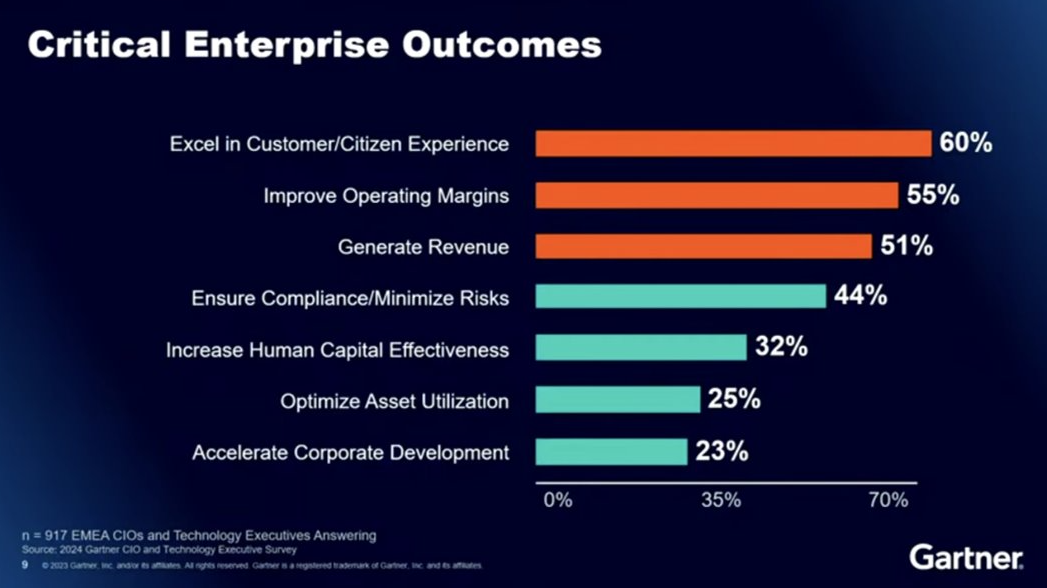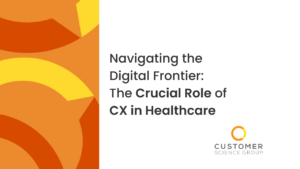Navigating the Digital Frontier: The Crucial Role of Customer Experience in Healthcare
In the ever-evolving landscape of Australian healthcare, the importance of customer experience (CX) – or patient experience – cannot be overstated. While leveraging data remains the linchpin of engaging customers, patients, carers, stakeholders and funders, healthcare’s unique environment and regulatory framework, emphasises the need for effectively managing innovation with good governance and information management.
In this blog, we delve into the multifaceted relationship between CX, data, and the Australian healthcare system, exploring its potential for accelerating benefits in customer connection, operational optimisation, information reliability, and care outcomes through your transformation journey.
Data Management for Security Safeguards
Patient information, including access restrictions, personal health preferences, advanced care plans, allergy and adverse reaction management through to optimising patient facing time for clinicians demands strong governance. Reviewing data management practices and business intelligence frameworks is a hot topic as many healthcare organisations grapple with their changing world, and security remains a core focus. A current state review and understanding of the forward needs to support your strategy and growth plans can swiftly tweak governance from a ‘controlling’ to ‘supporting’ function in an organisation.
Embracing the Opportunity
Opportunities to adopt technology into service delivery and operations to manage an increasing amount of data abound, however it remains true today – identifying and leveraging the interrelationships between such technology, people and processes throughout the patient journey is what will deliver real and measurable impact outcomes, and differentiation. We often hear ‘technology is the easy bit’. Supporting your teams, and appropriate frameworks to get the most out of technology, will see the conversation morph from ‘tools’ to ‘solutions’ and cement sustainable impact.
Demonstrating Value and Impact
A human-centred design approach to streamlining processes and supporting staff in change management practices to eliminate those tempting ‘workarounds’ is demonstrated to enhance overall patient, and clinician, experiences.
Recent analysis released by Gartner, looking at data from 917 organisations, shows that the number one reported enterprise level outcome of AI as a technology solution was customer experience (reported by 60% of organisations) closely followed by improved operating margins (reported by 55%)*

* Gartner 2024 CIO and Technology Executive Survey.
Leading healthcare organisations are actively focusing on understanding what success looks like from their budget allocations. Baselining and often very simple monitoring measures aligned to a reputable benefits management framework, can be very powerful to demonstrate the impact you are making in value creation, patient engagement and care outcomes.
Highlighting measurable impact outcomes is key to service excellence in healthcare delivery. It is increasingly representing competitive advantage for progressive health organisations and can unlock future funding. The impact? It’s a convincing pathway to rally stakeholders to adopt healthcare innovation and customer – or patient and clinician – engagement.
The pivotal role of CX in Australian healthcare’s digital evolution is evident. By embracing the opportunities presented by data assets and navigating the challenges of data security, the sector can achieve new levels of efficiency, reliability, and patient-centric care. As stakeholders evaluate the readiness to invest, the importance lies in demonstrating the tangible benefits, both in terms of cost savings and improved patient outcomes. To support our workforce in healthcare practices, the sector’s journey towards a digital future must be guided by a commitment to good governance and a commitment to patient experience.
Sustainability lies in the close integration of technology, people, and process in 2024.
Author – Rosemary Hotten
Connect with Rosemary in the form below.
